The idea was to develop the structure to interact and adapt with the program and the people based on use and preferences
The programme revolves around the concept of people from various walks of life can exchange knowledge and skills by teaching and communal living. The design Targets how to make a space adaptable to its evolving needs and changing user groups of artisans, tourists, students and the locals.
The space houses a hub for exchange of culture and knowledge. The structure had to mainly focus on how to give its users a adaptable space that can create an ecosystem where the structure envelopes the activities to its fullest.
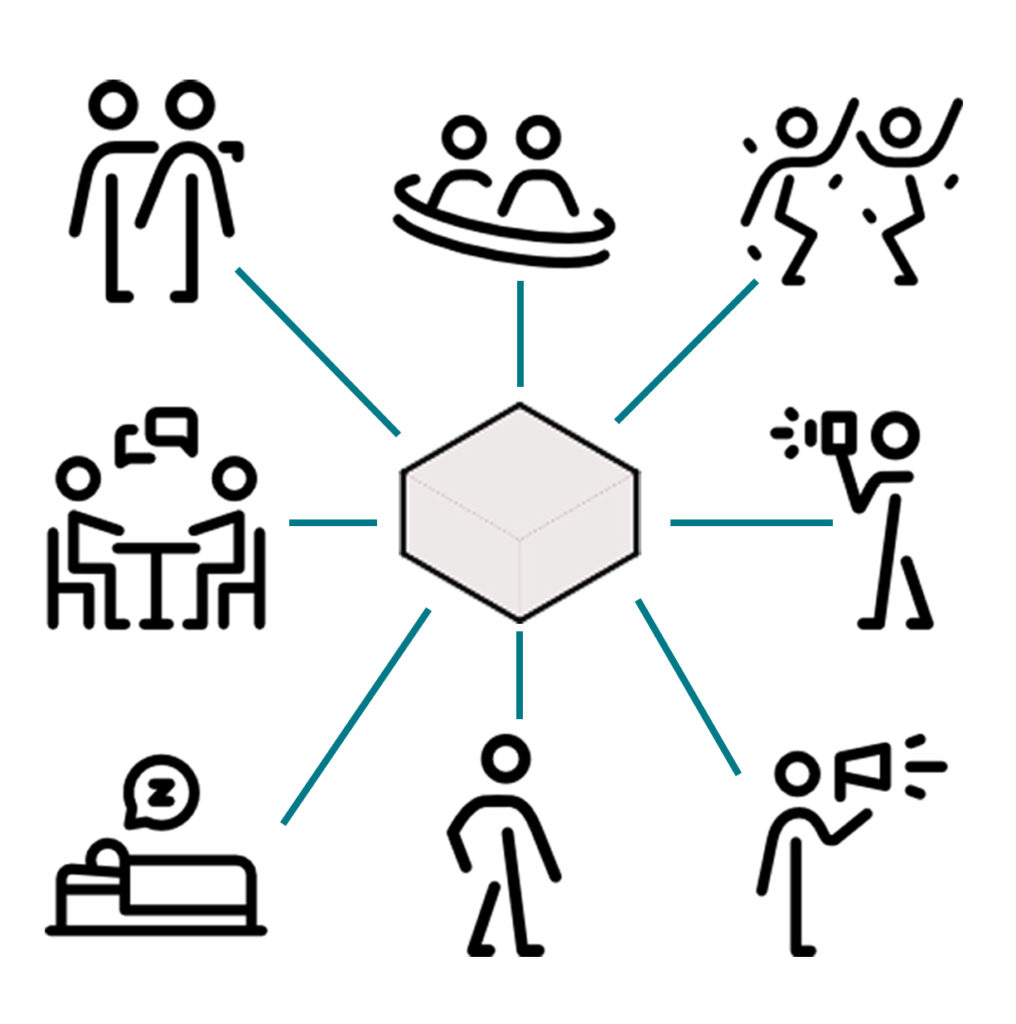
The pixels grow topologically in the space by the addition of different pixels to each other forming multiple variation of how spaces interact with each other.
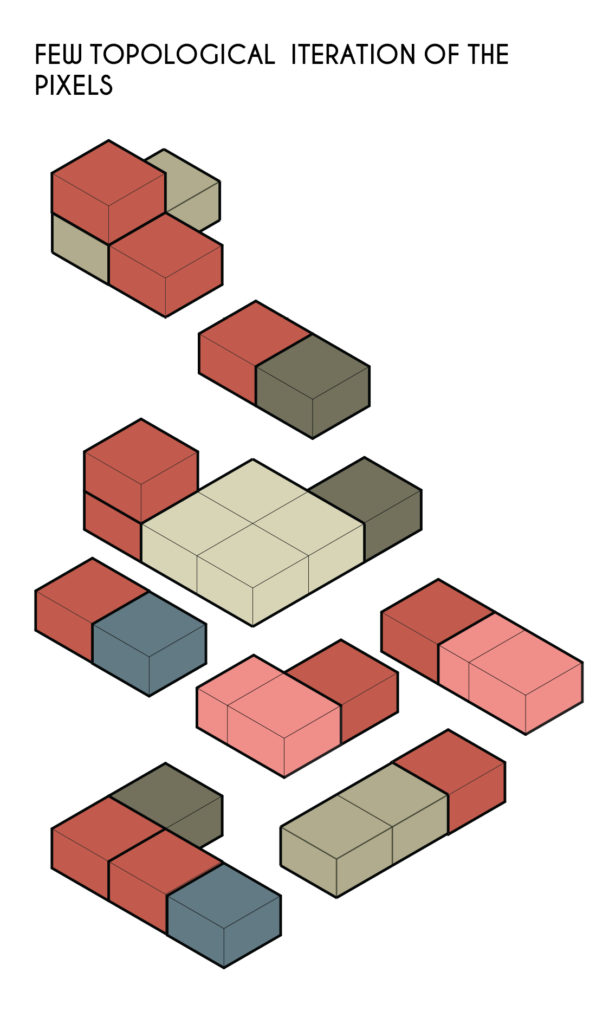
To achieve the modularity a grid of 5m x 5m was placed to the dimensions of the site and to develop a the loads can be placed independent of how the pixels are placed therefore giving it the option to be adaptable to the ecosystem of the program and its needs.
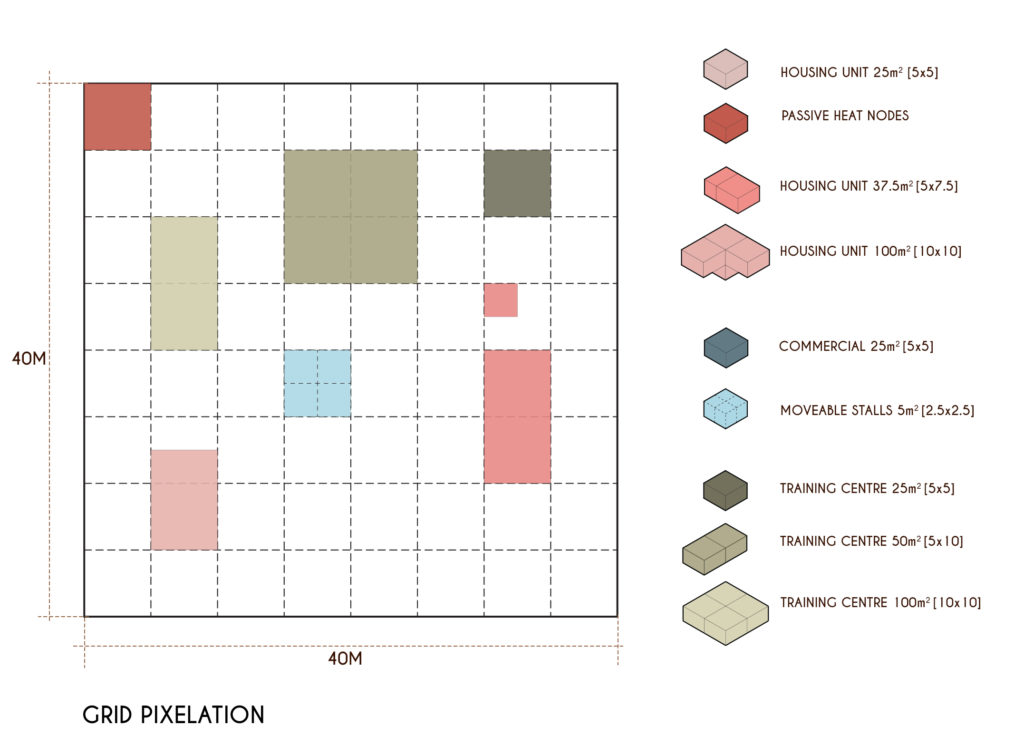
The structure was intended to respond to its ecosystem by placing the various pixels in many iterations based on its programme. For example a housing unit could be combined with a heat node or a greenhouse or two activity halls can be combined with a commercial unit and a heat node , thus giving the user groups control of spatial zoning based on their needs.
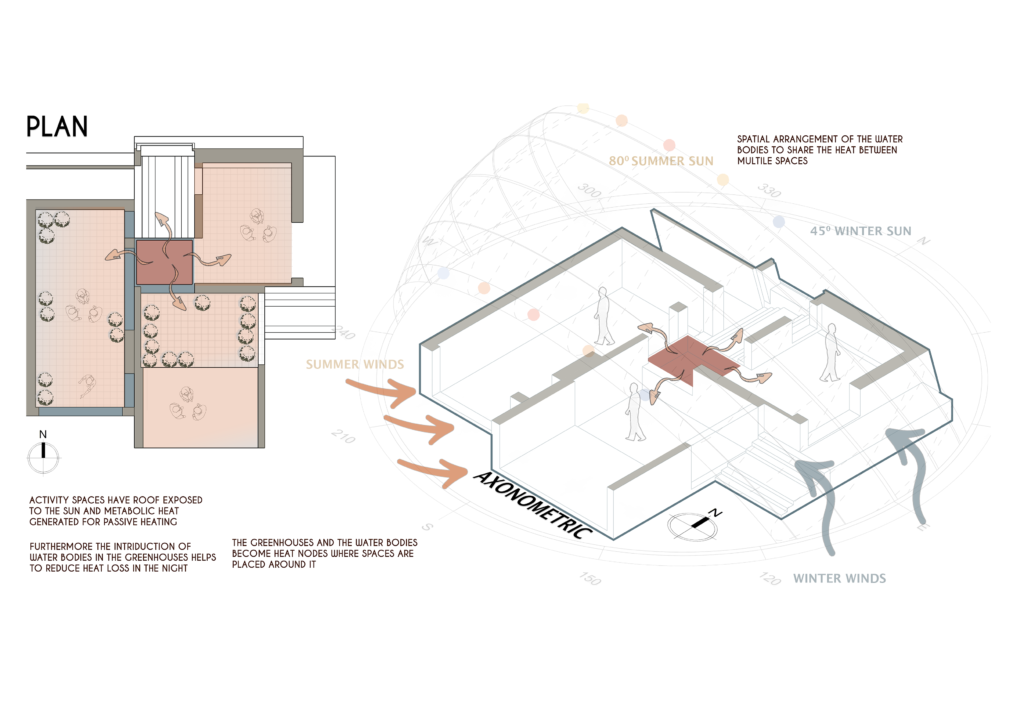
Given the large influence of Buddhism in the country and its long history with Tibet, the main architectural style of the buildings here is the Tibetan Buddhist style. The country is so strongly rooted in culture and tradition that it is reflected in their lifestyle also. One common practice in Bhutan is avoiding the use of iron bars and iron nails for construction, which makes the architecture of Bhutan different from the rest of the world.
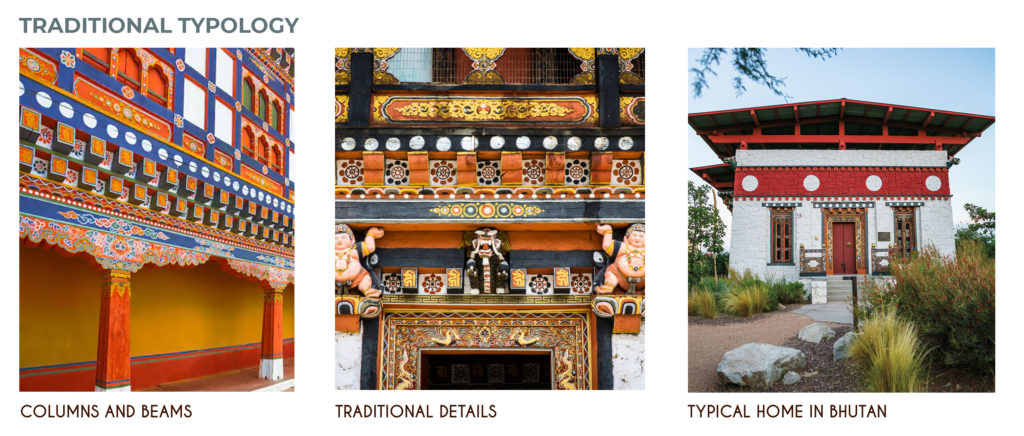
Bhutan being the happiest country in the world believes and practices co-living, sustainability and resilience. The country’s wealth is in ecological and natural heritage. The use of timber in the form of GLT and CLT gives the opportunity to introduce newer methodology of construction while keeping in mind the core ideology very similar to the country’s motto.
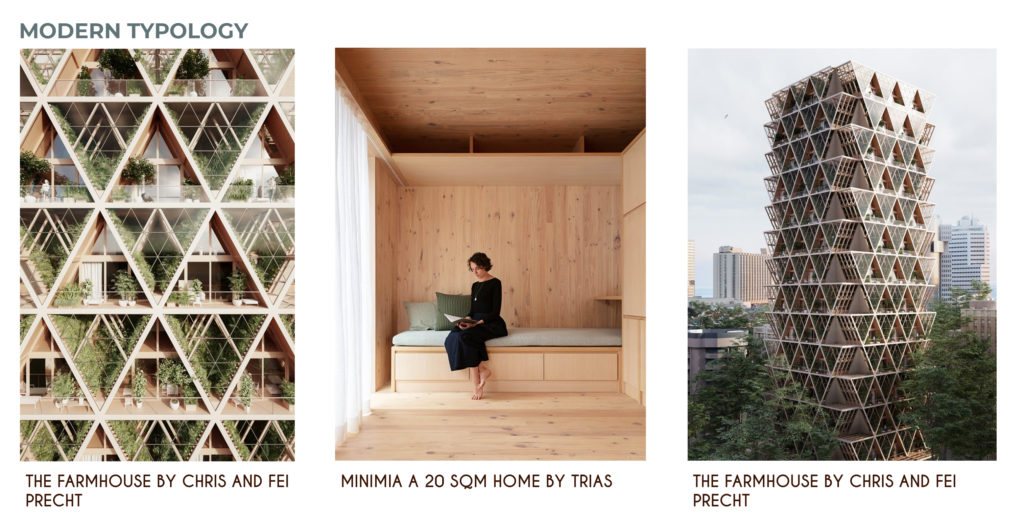
The design revolves around the idea of it being adaptable and modular and establishes a synergy between the site and the Built and allows the people to be involved in the construction process. thus, prompts the usage of a material that has the potential to achieve modularity. Thus, the use of GLT columns and beams acts as a skeleton and the residential units in the form of modular boxes can be added on and within the skeleton thus incorporating flexibility and porosity, instead of the rigidity instilled by structural CLT walls.
STRUCTURAL SYSTEM
STEP 1: Creating Structural MAT for a span of 10 x 10 m and 5 x 5 m ; such that the 10×10 mat acts as the main structural mat and according to the need of the user, the 5×5 mat can be attached to it.
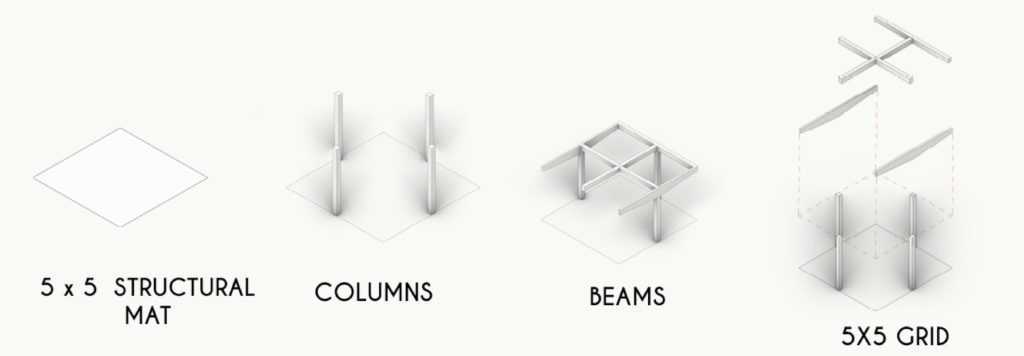

STEP 2: Understanding the load acting on the structure and optimizing the beams with respect to the structural requirement.

STEP 3: Understanding the Assembly.
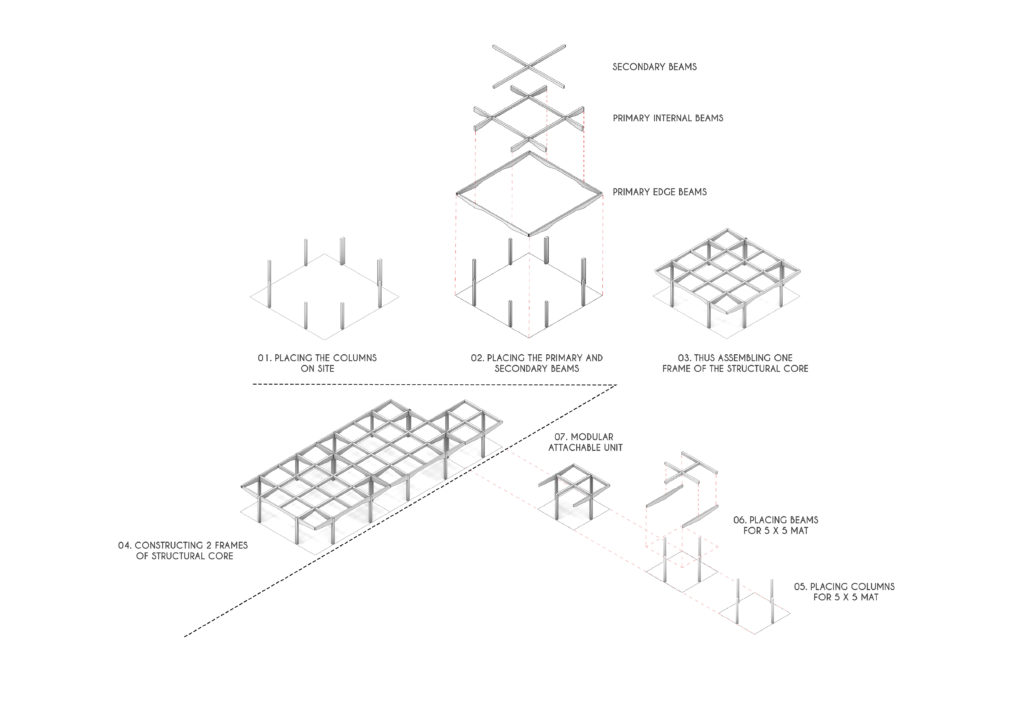
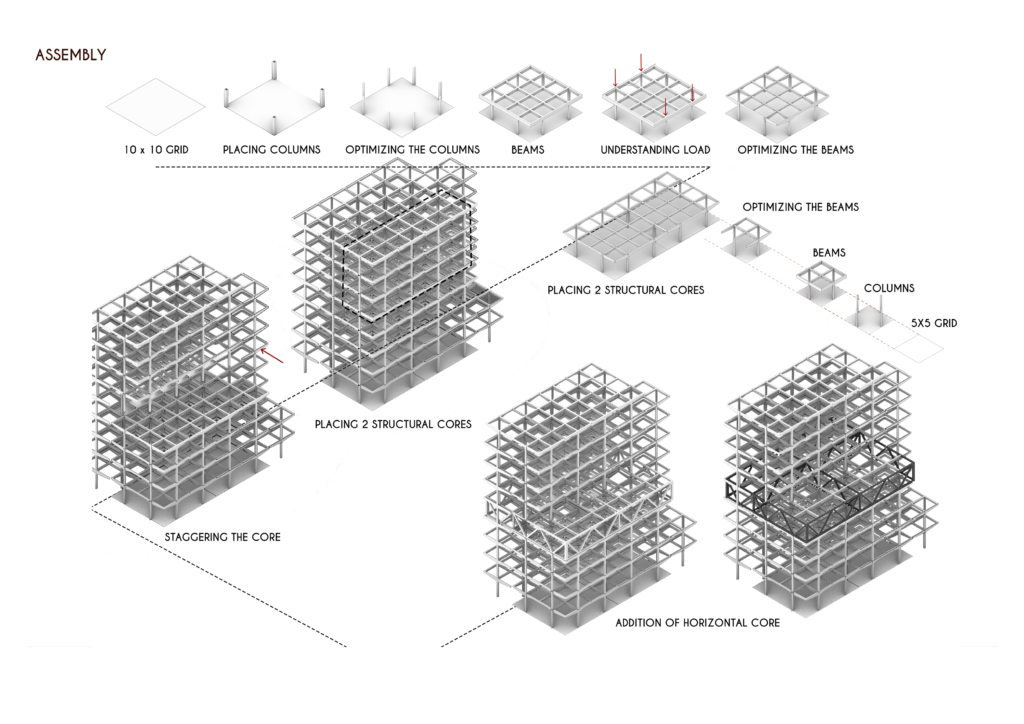
STEP 4: Understanding The Joinery
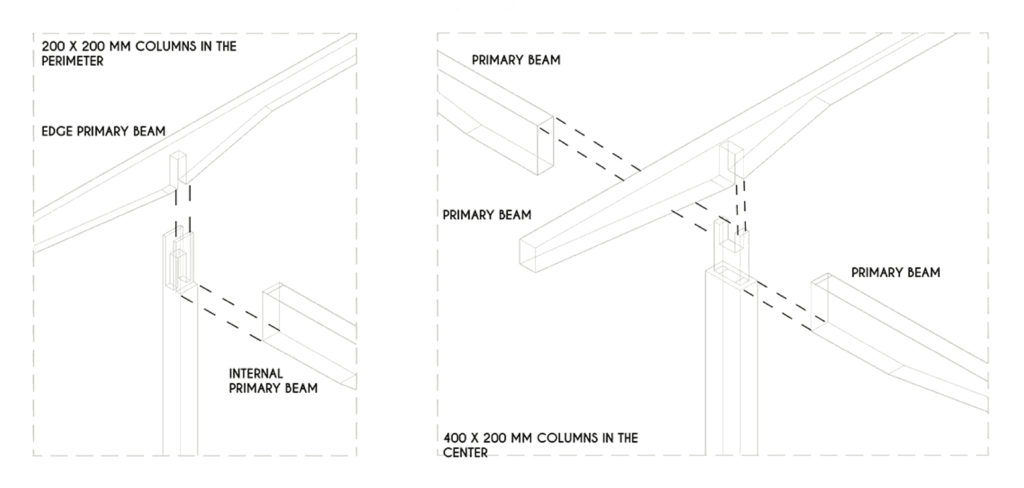
STEP 5: Cataloguing the beams and columns
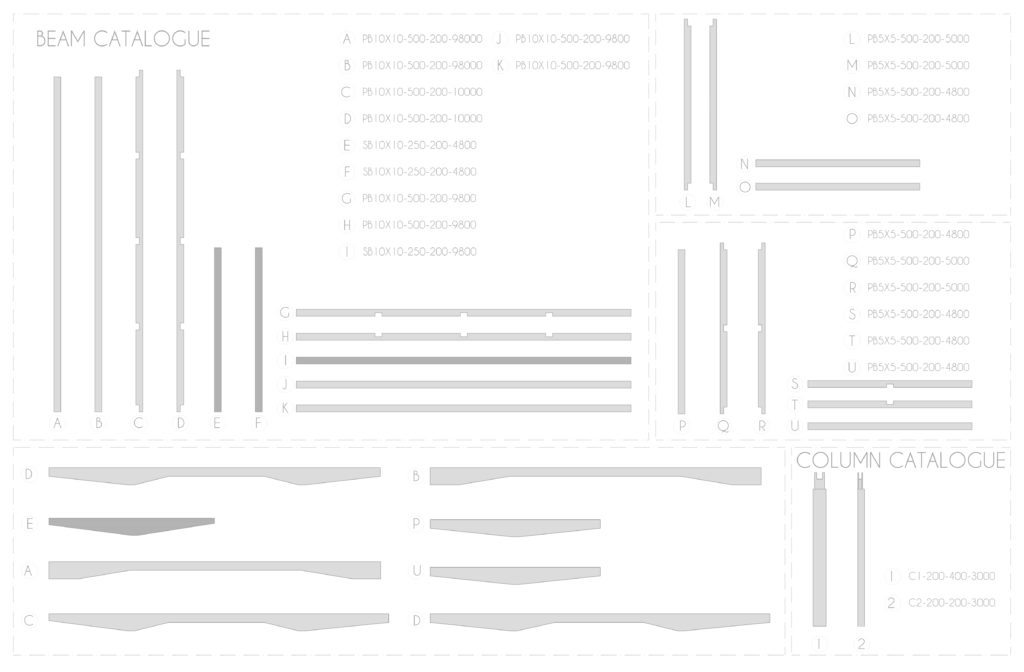
CARBON FOOTPRINT OF THE BUILDING
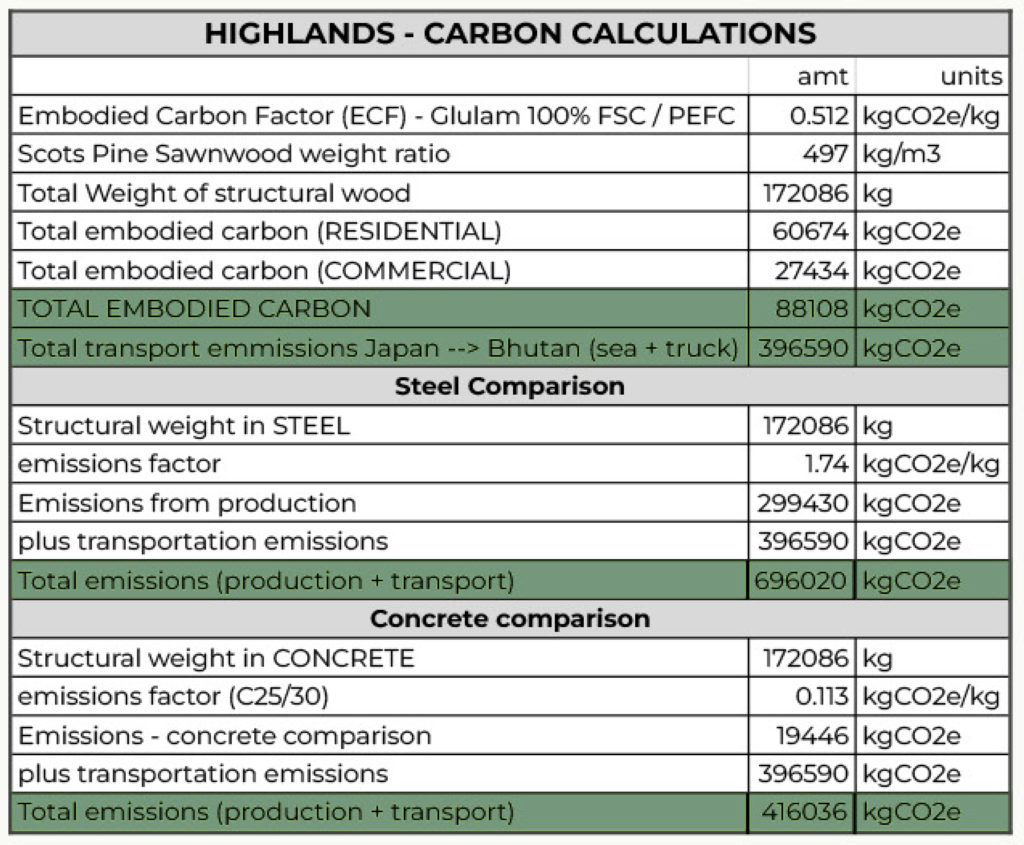
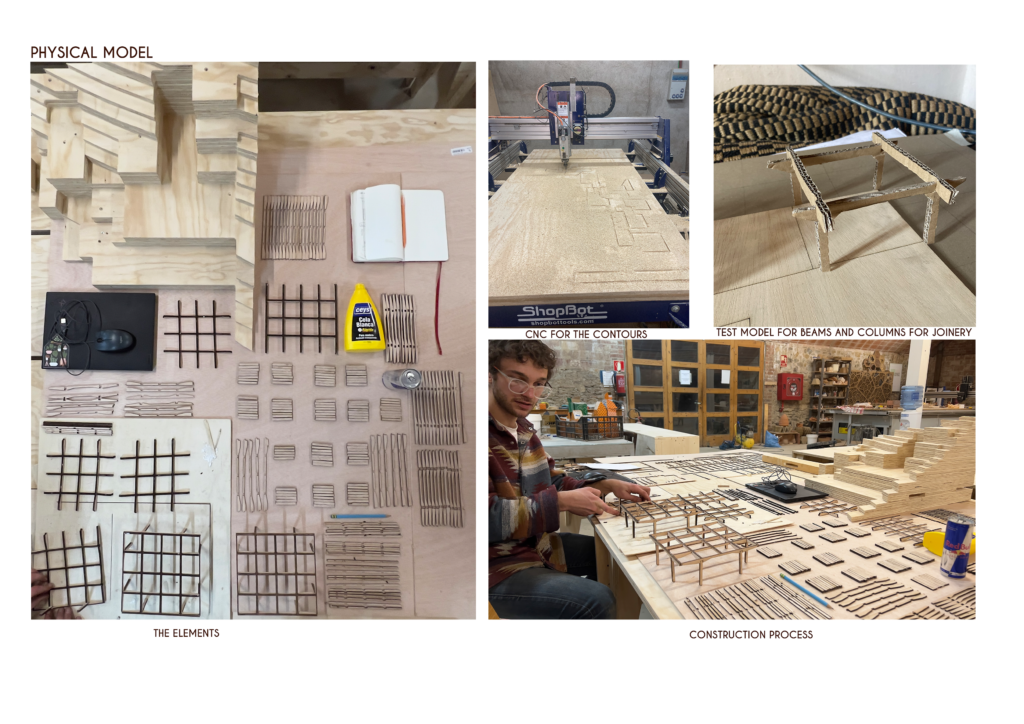
MANIFESTO
The critical stance the design takes is to encompass the multitude of activities housed by the programme which brings various walks of life to exchange and spread knowledge. The driving force is to create a structure which can constantly adapt based on the everchanging and evolving needs of the user groups and culture. The structure creates a ecosystem that can change based on climate culture and activity. The pixel which envelopes the programme and the structural grid create a harmonic ecosystem of people, culture and heritage
“Medicine, law, business, engineering, these are all noble pursuits, and
necessary to sustain life. But poetry, beauty, romance, love, these are what we stay alive for.”
? Dead Poet’s Society

